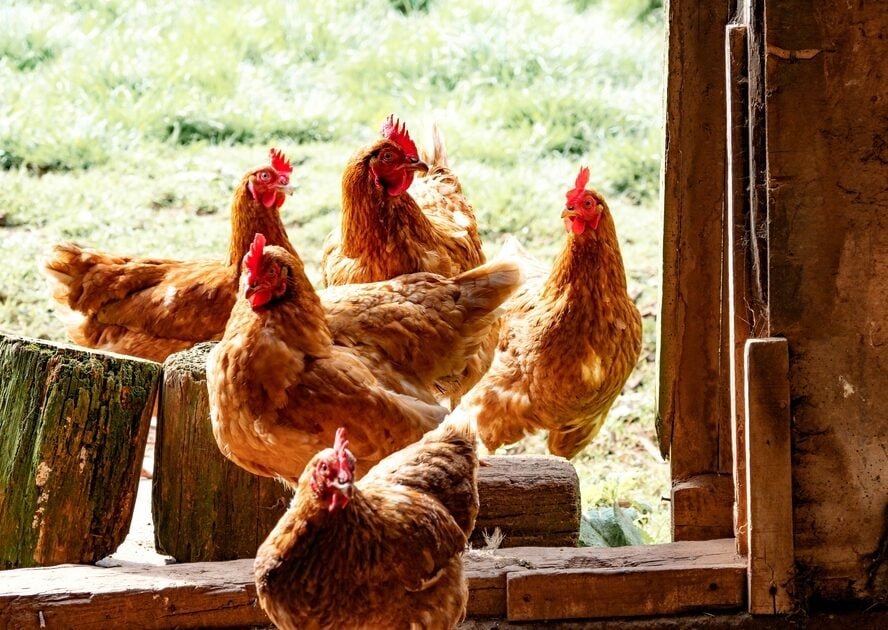
Breaking information: Chances are you’ll quickly be seeing naked cabinets the place the cage-free natural eggs as soon as sat within the grocery retailer. You would possibly assume that is linked to the latest outbreak of avian flu, however the scarcity isn’t what it appears.
Whereas chicken flu continues to be a persistent downside impacting the supply and value of eggs throughout the US1, this new dearth is definitely linked to a change within the laws on what constitutes a cage-free natural egg. No shock, many producers who as soon as met the rules now now not do.
“The various industrial-scale cage-free amenities that want to keep natural standing might want to make monumental changes to their animal agriculture fashions,” explains Cameron Whitehead, COO of Pete & Gerry’s Natural Eggs. “The brand new requirements will pressure cage-free farms to reinforce their hens’ out of doors dwelling area in a approach they haven’t but explored, largely resulting from price implications.”
What Are Cage-Free Eggs?
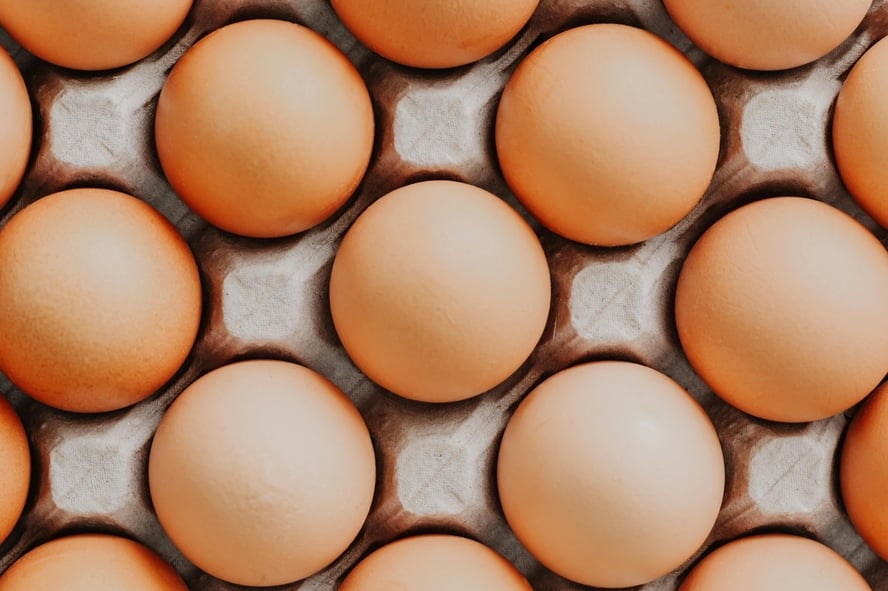
Earlier than we dive into the brand new laws, what does a “cage-free” declare in your carton of eggs at the moment imply? Nicely, sadly, a part of the necessity for brand spanking new laws stems from an absence of consistency within the definition. In idea, cage-free eggs are hatched from hens that don’t reside in cages and have the liberty to roam through the laying cycle. In apply, the foundations are so ambiguous that the end result is much from humane.
For instance, it’s not unusual for giant cage-free egg amenities to basically function as warehouse factories. Though there might not be any cages in sight, the overcrowded situations are virtually as dangerous. And with out clearer laws round each cage-free claims and natural standing, it would stay troublesome to separate the humane eggs from the inhumane ones.
The New Rules
The brand new Natural Livestock and Poultry Requirements have been introduced by the USDA final October and go into impact on January 1, 2025, with plans to roll out extra laws by 20292. These laws characterize “considerably improved humane situations for cage-free hens which might be being raised organically,” says Whitehead.
The various industrial-scale cage-free amenities that want to keep natural standing might want to make monumental changes to their animal agriculture fashions.
Cameron Whitehead, COO of Pete & Gerry’s Natural Eggs
With the rollout of the brand new requirements, cage-free natural egg-laying hens will get pleasure from elevated perch and feed area. Maybe most significantly, the screened-in, enclosed porches hooked up to the buildings that home these birds will now not qualify as enough out of doors area.
The Loophole within the Current Rules
The existence of those porches is linked to a loophole in what qualifies as entry to the outside, explains Mark Kastel, one of many founders of natural trade watchdog OrganicEye. Many giant manufacturing unit farms within the U.S. — even USDA Licensed Natural ones — confine hundreds of birds to only one constructing “with a concrete ground, screened partitions, and metallic ceiling,” says Kastel.
The “out of doors” porches hooked up to those buildings solely have the capability to carry a mere fraction of the birds. Kastel explains that the flooring of the buildings are so packed that it makes it extremely troublesome for birds to squeeze their well past one another to go open air. “The one birds that get out can be proper subsequent to the door,” he says.
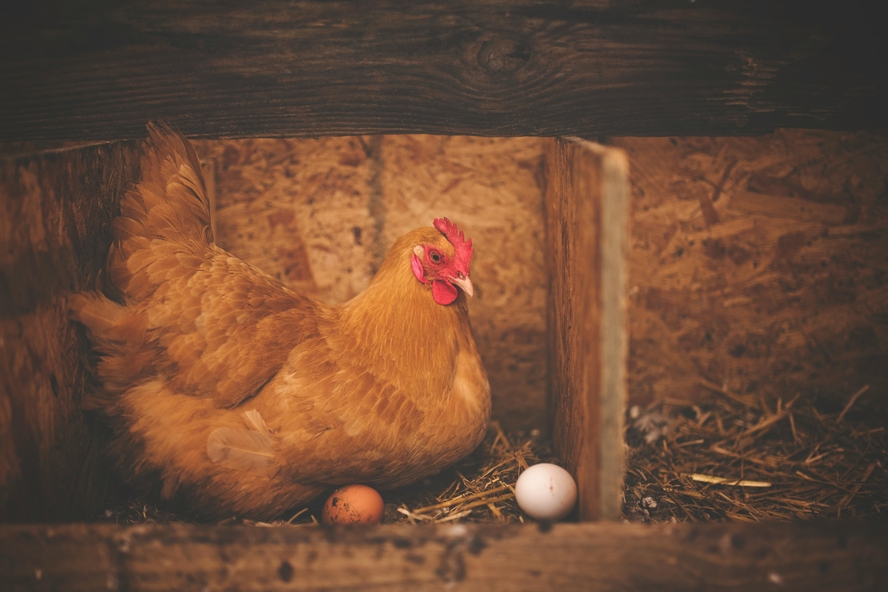
To make issues worse, these farms sometimes use large followers to whisk away the ammonia created by the tons of manure in these areas. This creates “a hurricane wind” outdoors the constructing, says Kastel, which additional dissuades birds from benefiting from their “out of doors” area. “I might recommend that 97% of them are being illegally confined with out entry to the outside.”
That mentioned, Kastel doesn’t see the brand new requirements as a real step ahead, both. “The present guidelines have been ample,” he says, alleging that the USDA deemed them “too ambiguous” for enforcement. “However the natural requirements as they existed weren’t being enforced.”
However, the brand new benchmarks imply large livestock factories can’t proceed to function as they as soon as did. Kastel expects bigger operations to fulfill the brand new laws by contracting with mid-sized Amish and Mennonite farms, which maintain their hens in buildings with a 20,000 to 40,000 chicken capability. Sadly, he nonetheless expects that “a really small proportion of these birds will truly be outdoors.”
The Advantages of Really Humane Eggs
Other than the apparent, there are additionally egocentric causes to push for extra stringent laws. Really humane, natural, pastured eggs have confirmed to be extra flavorful and extra nutritious than standard, with a 2010 examine exhibiting that eggs laid by pastured hens have been richer in omega-3 fatty acids and nutritional vitamins A and E3. The researchers at Penn State’s Faculty of Agricultural Sciences discovered that these extra vitamins stem largely from the weight loss plan of pure bugs and foraged grasses that pastured hens get pleasure from.
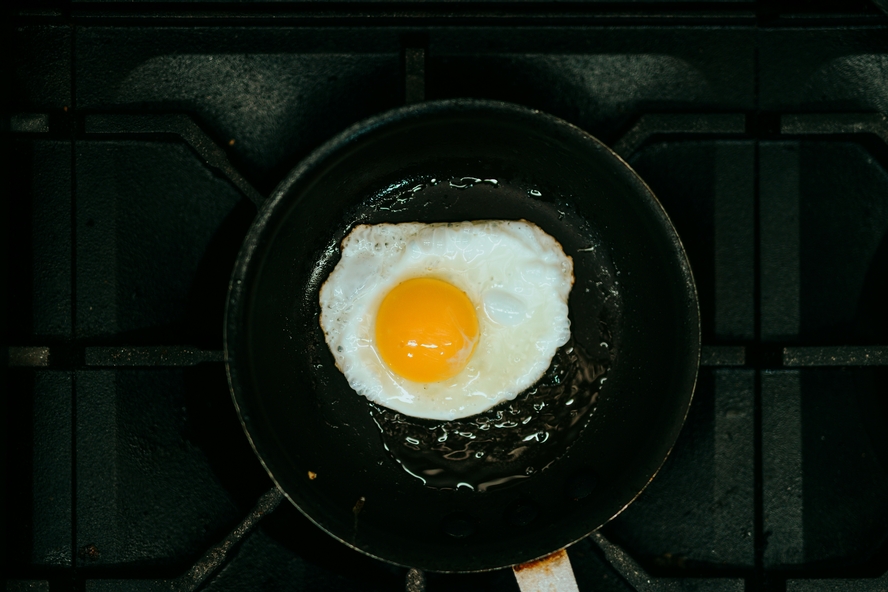
Whereas the brand new laws are a push in the fitting path when it comes to the humane therapy of egg-laying hens, there isn’t a proof that they may make a significant sufficient distinction to contribute to improved taste or diet. Fortunately, there have lengthy been small farming operations dedicated to producing humane eggs. For instance, Pete & Gerry’s pasture-raised eggs come from hens that roam open air with at the very least 108 sq. ft of area per hen.
Find out how to Determine Humane Eggs
Really humane, natural, pastured eggs have confirmed to be extra flavorful and extra nutritious than standard, with a 2010 examine exhibiting that eggs laid by pastured hens have been richer in omega-3 fatty acids and nutritional vitamins A and E3.
To search out extra humane eggs, customers have to look a bit nearer at their egg cartons. And regardless of the crackdown on laws, the USDA Licensed Natural label nonetheless isn’t fairly sufficient. Right here’s what it’s best to look out for.
Manufacturers to Purchase From
If you happen to’re in a rush and simply need some extensively accessible manufacturers you possibly can belief, Kastel recommends Important Farms and Good-looking Brook. Each of those farms strategy a pastured mindset that Kastel phrases “enhanced out of doors entry.” Whereas their hens all reside in mounted homes and must be distinguished from really pasture-raised birds, the buildings have extra doorways than most, and the farmers make a real effort to encourage their birds to exit.
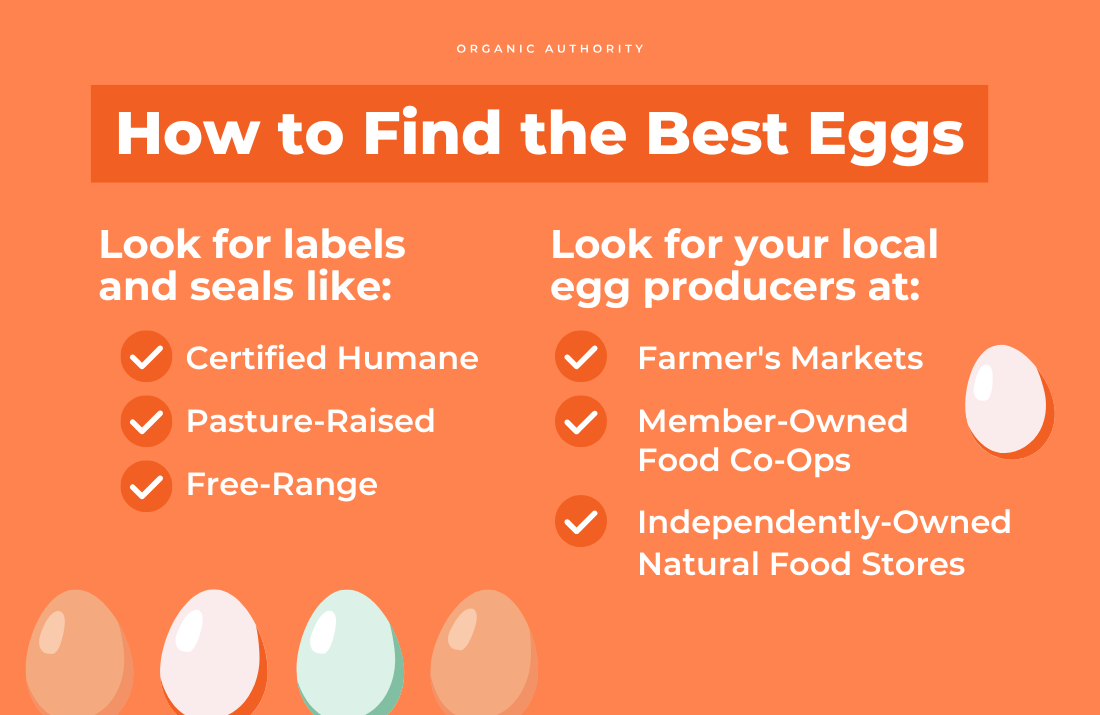
Seals and Labels to Look For
For really humane eggs, Whitehead recommends searching for the Licensed Humane seal, paired with labels like ‘pasture-raised’ or ‘free-range.’ Licensed humane eggs imply that the egg producers have met rigorous requirements set by the Humane Farm Animal Care group. In different phrases, you possibly can belief that the hens that laid the eggs had ample area to put eggs with minimal misery.
Free-Vary vs. Cage-Free
There’s a typical debate about two labels you would possibly see in your eggs: free-range vs. cage-free. In relation to free-range eggs vs. cage-free, the phrases shouldn’t be used interchangeably. Free-range eggs characterize a step up. “These phrases imply that the eggs have been produced by hens that reside a pure way of life and have the liberty to roam open air on pastureland,” says Whitehead.
Pasture-Raised vs. Free-Vary
Armed along with your new data in regards to the loopholes in cage-free egg laws, you possibly can in all probability guess that each pasture-raised and free-range eggs are extra humane than cage-free eggs. However what’s the distinction between the 2?
The primary distinction between these two labels is the minimal quantity of outside area supplied to the hens. Free-range eggs require every hen to obtain a minimal of two sq. ft of pasture. This already represents an enormous enchancment in comparison with cage-free eggs — however pasture-raised eggs take issues even additional. To qualify as a pasture-raised egg, the hens should every have a minimal of 108 sq. ft to roam.
Find out how to Discover the Very Finest Eggs
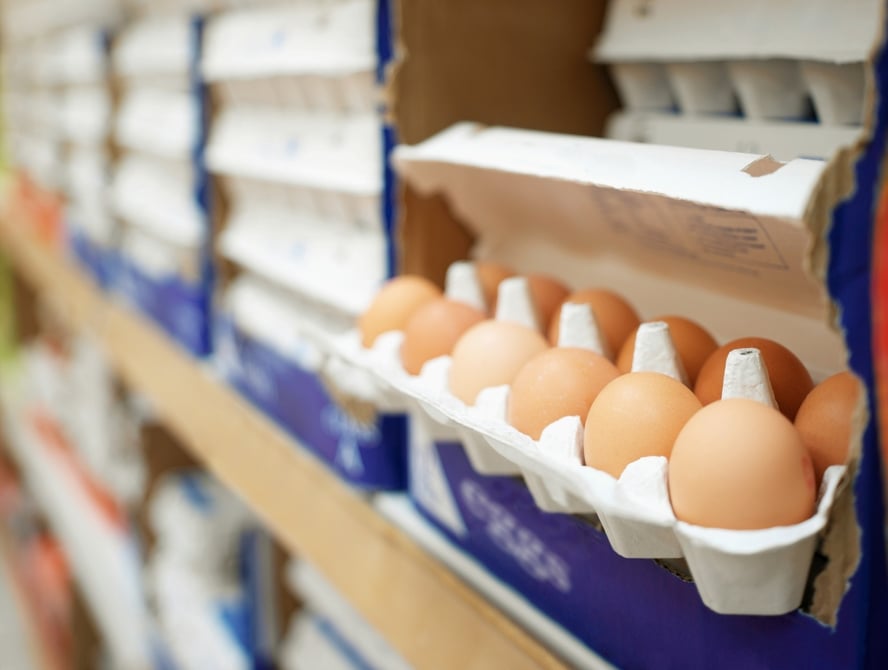
If you happen to’re actually dedicated to animal welfare and need to do your personal analysis, there are a number of extra issues you possibly can search for past the everyday labels. For the best eggs, Kastel recommends searching for regionally marketed, pastured eggs. “That’s the place you’re gonna discover really natural eggs.”
For instance, he mentions Joel Salatin, proprietor of the pioneering Polyface Farm in Swoope, Virginia. “He has what he calls an eggmobile, a giant trailer that he strikes each single day, out in an actual pasture,” explains Kastel4. “The birds are by no means in their very own excrement. And so they’re at all times with recent grass or weeds or bugs, or no matter they’re consuming.”
Versus most natural farms he visits, the place he sees about two to 3 p.c of birds open air at any given time, Kastel was glad to see a marked distinction at Polyface Farm. “At Joel’s farm in Virginia, there weren’t three p.c of the birds out. There have been two or three p.c of the birds inside.”
“For the easiest eggs, search for regionally marketed, pastured eggs. That’s the place you’re gonna discover really natural eggs.”
Mark Kastel, Co-Founding father of OrganicEye
Salatin is just one of a number of small producers elevating egg-laying hens in such a humane, eco-conscious approach. To discover a equally humane supply of eggs close to you, Kastel recommends monitoring down your native egg producers: on the farmer’s market, member-owned meals co-op, or independently-owned pure meals retailer. Assets like Eat Wild or The Actual Natural Undertaking make this a bit simpler, permitting you to search out the most effective retailers close to you.
“In order for you the most effective meals, past the minimal in natural, it takes a bit of extra effort to do your homework,” says Kastel. “However I say it’s price it.”
Sources:
- https://www.msn.com/en-us/food-and-drink/recipes/bird-flu-impacting-local-egg-prices-stores-strive-to-keep-costs-low/ar-AA1vicBk
- https://ota.com/advocacy/critical-issues/organic-animal-welfare-standards
- https://www.psu.edu/information/agricultural-sciences/story/research-shows-eggs-pastured-chickens-may-be-more-nutritious
- https://www.youtube.com/watch?v=V_nZNGSZAII

